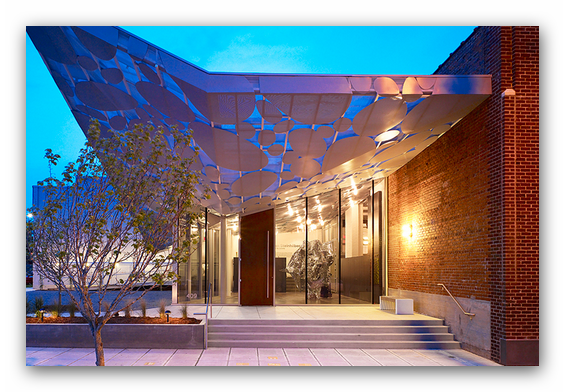Aug 28 2016 - Jan 8 2017
Contemporary Art Museum - Raleigh
Raleigh, NC
Precious Lovell: The Ties That Bind is a collection of 15 apron studies that continue Precious Lovell’s exploration of the narrative potential of cloth and clothing with a focus that is both personal and universal. The exhibition explores the lives of women through the cloth and clothing they have historically made, worn and continue to make. The medium is the combination of techniques used by improvisational and traditional patchwork techniques of African American quilters with those of Korean women’s Jogakbo (Patchwork), Nubi (Quilting) and Bojagi (Wrapping Cloths).
The African modesty apron serves as the clothing artifact for the explorations of techniques. Its function is to maintain the dignity of its wearer. These aprons take many shapes and forms and are made from a variety of materials, including fabric, metal, animal skins, plant fiber or simply a bunch of leaves. They are woven, braided, cast in metal, fringed and intricately beaded. The apron strings on most modesty aprons are arbitrary with the focus remaining on the apron itself. Lovell has used the strings to continue the narrative by embroidering them with a code. The artifacts and the techniques serve as inspiration for the forms and making processes of the objects.
The primary subjects of this exhibition are the women of Lovell’s heritage, her maternal and paternal female ancestors and women of the African Diaspora. Although African American and Korean women have very distinct cultural backgrounds, historically they have some shared experiences. The Japanese occupation of Korea, like the enslavement of Africans in the Americas, endeavored to strip enslaved Koreans and Africans of their heritage and identities. Assimilation was forced upon both groups. Significantly, the women of both of these groups were subjected to further indignities by the physical violations they endured. Enslaved African women were powerless to resist such humiliations at the hands of their slaveholders, as were the Korean women who became so called Comfort Women (a name rejected by those who were exploited) for the men of the Japanese military.
Historically, women have utilized cloth and clothing as a means to hold onto their identities and culture. African American quilting techniques have strong visual and technical connections to Africa through color, pattern and motif. These elements were translated into patchwork because the enslaved women had access to the scraps of material left over from dress making and other fabric-based production. Jogakbo and Bojagi, which flourished during the Joseon Dynasty, were also produced from left over fabric scraps for both commoners and royalty. Korean women still produce and use these cloths as expressions of cultural identity and craftsmanship.
Like many African American quilt makers during enslavement, Jogakbo, Nubi and Bojagi makers have remained largely undocumented. However, the work of these often-unknown women have, in recent years, gained considerable recognition and is considered by some to be in the same category as modern art. Through these studies Lovell endeavors to conceptually protect and restore the dignity of these women and celebrate the work of their hands and hearts. Concurrently, she hopes to reclaim the true meaning of a comfort woman in honoring the memories of her female ancestors, whose memories she turns to when in need of comfort.
Lovell’s work in creating these aprons is a way to experience these two different yet similar examples of women’s work in telling a shared history of making by the women who created the cloths. Precious states “I do not in any way suggest that my work compares to the extraordinary work of these women, as the highly skilled work they produced was accomplished over many years of practice and refinement. My hope is to honor the women and their perseverance through this story while showcasing my interpretations of their handwork.”
Precious Lovell on her work: “When I pick up a piece of fabric, a needle, and thread, I am reminded of how stories and histories are revealed in cloth and clothing. Techniques traditionally considered women’s work including sewing and needlework are the foundation of my practice.
Excluded, under-told and forgotten stories combined with a passion for making and materials merge and unfold as new storylines. The narratives that inspire and inform my making are those of the African Diaspora, her-stories and the experiences of the disenfranchised. Often reflections based on personal experience, my work is an ongoing examination of who I am, where I fit and how I choose to participate in the historical narrative.
I see cloth and clothing as a visual language. As I explore this language I try to discover a vocabulary that speaks of the extraordinary within these ordinary materials, uncovering stories through color, texture, pattern and form. I use these elements to embed my work with meaning and to create textile objects that engage viewers on both an aesthetic and emotional level. I am liberated when I stitch and I strive to liberate my subjects and those viewing my work through respect and contemplation.”
Credit: Exhibition overview from museum website.
Exhibition Venues & Dates
Aug 28 2016 - Jan 8 2017
Contemporary Art Museum - Raleigh
Raleigh, NC
